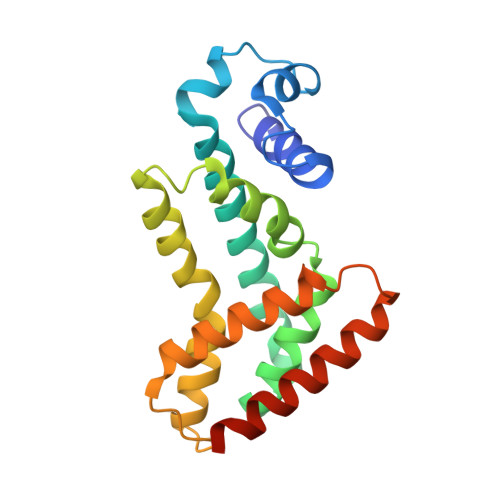Structural mechanism of the simultaneous binding of two drugs to a multidrug-binding protein
Schumacher, M.A., Miller, M.C., Brennan, R.G.(2004) EMBO J 23: 2923-2930
- PubMed: 15257299
- DOI: https://doi.org/10.1038/sj.emboj.7600288
- Primary Citation of Related Structures:
1QVT, 1QVU - PubMed Abstract:
The structural basis of simultaneous binding of two or more different drugs by any multidrug-binding protein is unknown and also how this can lead to a noncompetitive, uncompetitive or cooperative binding mechanism. Here, we describe the crystal structure of the Staphylococcus aureus multidrug-binding transcription repressor, QacR, bound simultaneously to ethidium (Et) and proflavin (Pf). The structure underscores the plasticity of the multidrug-binding pocket and reveals an alternative, Pf-induced binding mode for Et. To monitor the simultaneous binding of Pf and Et to QacR, as well as to determine the effects on the binding affinity of one drug when the other drug is prebound, a novel application of near-ultraviolet circular dichroism (UVCD) was developed. The UVCD equilibrium-binding studies revealed identical affinities of Pf for QacR in the presence or absence of Et, but significantly diminished affinity of Et for QacR when Pf is prebound, findings that are readily explicable by their structures. The principles for simultaneous binding of two different drugs discerned here are likely employed by the multidrug efflux transporters.
- Department of Biochemistry and Molecular Biology, Oregon Health & Science University, Portland, OR 97201-3098, USA.
Organizational Affiliation:


















